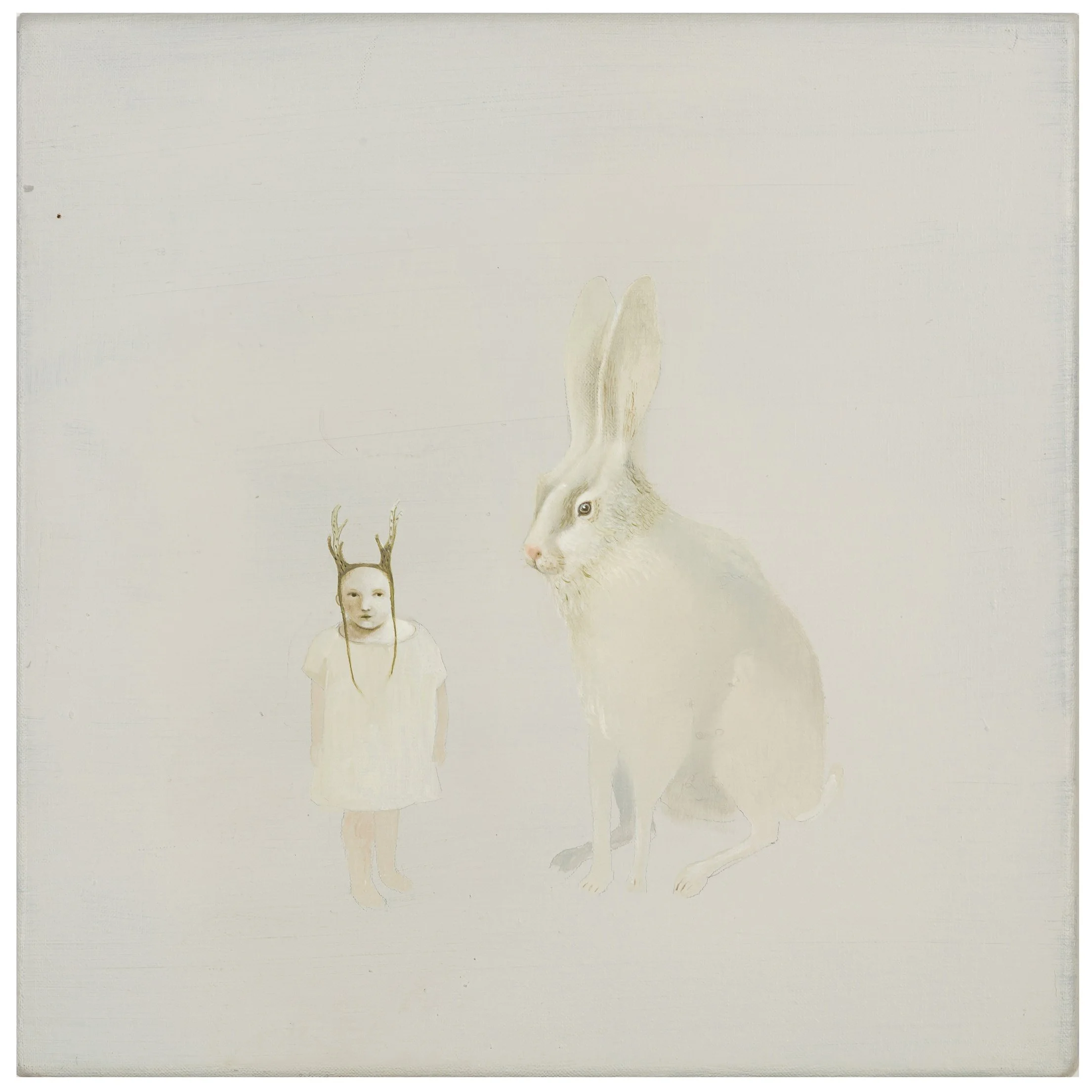
Sarah Ball: Portraits of Silence and Identity
SARAH BALL Marie, 2019
Images Courtesy of Phillips
Unearthing identity from police archives and faded photographs, Ball’s portraits turn anonymity into myth, stitching together the uncanny in the quietest of gestures.
Poisoner, 2013
Marie, 2019
Sarah Ball paints people who look back without blinking. Or perhaps they’ve blinked already, and what we’re left with is the residue—the arrested stare, the skin mapped in half-tones, the unfinished confession. There is in her portraits a composure that borders on refusal. The backgrounds say nothing. The faces almost say too much.
Before Ball became known for her crisp, archival-inspired portraiture—half-mugshot, half-mirage—she was exploring a more symbolic vernacular: children framed like totems, animals as proxies, mythic stillness rendered with unnerving simplicity. These early images remain rare on the market, and rarer still in exhibitions, but they cast a long visual shadow. There was nothing sentimental about them; they operated like field notes from a psychological ritual.
Her process remains studious. One image, sourced from a police file, revealed a faint discolouration near the hairline. Most would have missed it. Ball didn’t. She deduced the sitter had been a peroxide blonde—a detail unrecorded, but archived by the body. That is her mode: less portraitist than forensic folklorist, reconstructing identity from glances and shadows.
Today, Ball’s work is selling not just steadily, but voraciously. In 2024, several portraits—calmly sized, but clinically powerful—have fetched multiples of their estimates at Christie’s and Sotheby’s. Works like Mark (2020) and Seyon (2020), both 100 × 100 cm, have become soft-spoken darlings of collectors looking for less noise, more precision. At the March 2023 Phillips Contemporary auction her work Elliot (2020) sold for £120,000 on an estimate of £60,000. Even her prints - when you can get them - now fetch double what they did a year ago.
This market shift is not about scale or trend. It is about recognition—an appetite for clarity, for restraint, for images that do not clamour for attention but tighten around it. Ball's sitters don’t perform, and the paintings do not flatter. What they offer is something rarer: a demand that the viewer come to them.
Elliot, 2020
George, 2020
Observe Hare Child in that context—no model IDs, no ego—but still commaning because the market recognises that Ball does not add distraction: she subtracts. Her paintings seem to ask: what happens when you remove every chatter from an image? and leave only a face—clothed in hare mask, brocade jacket, or archival badge—to stand naked before us.
The result is both clinical and conspiratorial: portraits that record the absence of self alongside the evidence of it.
A painting so small, so still, yet able to blow apart the expectation that identity must be declared. The hare is child and trickster; the child is self and device. She calibrates ambition to the 30 cm square, and markets respond by turning whispers into demand.
It is in her small-scale restraint that Ball’s ambition grows most potent. A 30-centimetre square can deliver more disconcertion than billboard abstraction because detail concentrates, even in flatness. The surface is clinical, its clinicalness unnerves; the background denies context and traps the figure in its own timelessness.
To stand before one is to feel exposed. It is the sitter who is technically watched, but it’s the viewer who feels implicated. These are not faces you scroll past. They stay.
Ball's portraits resist the present tense. They speak in a visual grammar of delay. What you see is not what happened, but what remains. And in a time where presence is worn like a costume, her work affirms that identity is better read in quiet.

"In a world drowning in noise and surface, Sarah Ball excavates silence — every face a relic, every glance a secret kept."
SARAH MOON Hare Child, 2011




